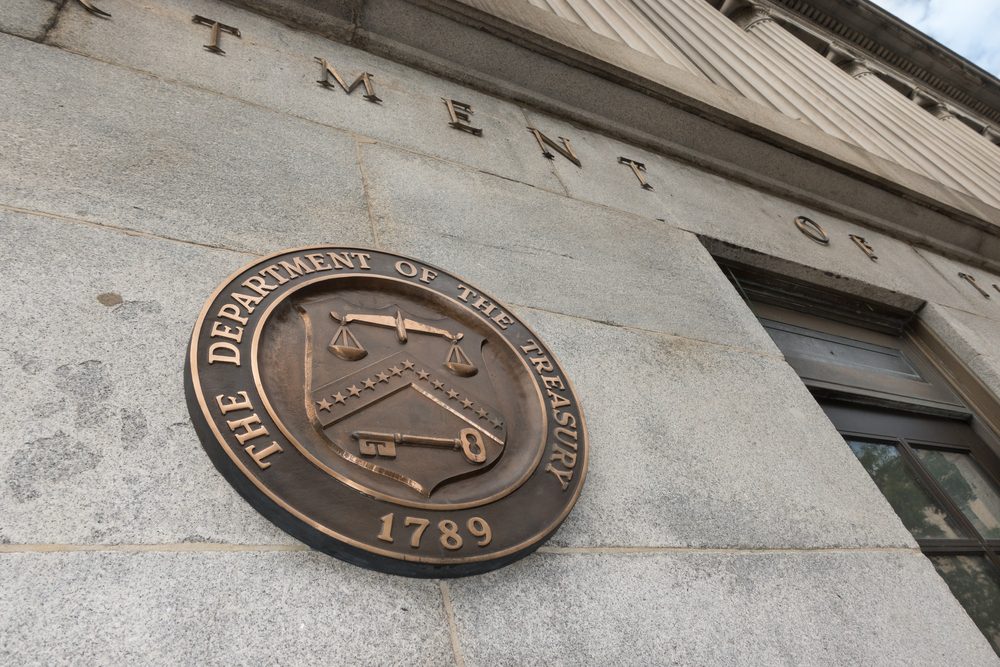- Kyiv to scrap tax exemptions as part of IMF deal
- Exemptions have helped economy to weather impact of war
- Move will boost tax revenues, says finance minister
- Says Kyiv monitoring moves around frozen Russian assets
Finance
Ukraine plans to restore pre-war tax system by July -Finance Minister
/cloudfront-us-east-2.images.arcpublishing.com/reuters/XC3KZ3A76NLR3NHXPNMPSAUSH4.jpg)
[1/5]Ignazio Cassis, Swiss Foreign Minister, Howard Graham Buffett, James Cowan, CEO of Halo Trust, Alex Lissitsa, CEO of the Industrial Milk Company, Yuliya Svyrydenko, First Deputy Prime Minister of Ukraine, and Denise Brown, United Nations official, attend the Ukraine Recovery Conference in London,…
LONDON/KYIV, June 22 (Reuters) – Ukraine plans shortly to reinstate government tax collection to pre-war levels in a push to comply with its IMF programme, scrapping exemptions and relief introduced since Russia’s invasion, Finance Minister Serhiy Marchenko told Reuters.
The move would generate extra government income of up to 10 billion hryvnia ($271 million) for the remainder of 2023 once Ukraine’s parliament has voted to restore it, Marchenko said in an interview late on Wednesday.
“We expect the restoration will be (voted on) at the end of June or the beginning of July,” said Marchenko, speaking on the sidelines of a two-day conference in London where Western donors have pledged billions of dollars more for Ukraine’s recovery.
“We can’t even cover our military expenditure with our taxes, but at least we can cover a part, and it gives us some space of manoeuvre.”
The plan is part of commitments Kyiv has agreed under a nearly $15.6 billion International Monetary Fund loan programme approved in early April. However, that pales in comparison to Kyiv’s funding needs which amount to billions of dollars.
Measures introduced to help Ukraine’s economy weather Russia’s invasion, launched on Feb. 24, 2022, have included lowering value-added tax on profits for some businesses and lower tax rates for some private entrepreneurs. It also cut some taxes and duties on fuel products.
They are all now expected to end.
Marchenko said the government would also push for customs reforms during the second half of the year, including the introduction of a shared database with European Union countries “to avoid illegal trades”. The minister did not elaborate.
RECOVERY EFFORTS
Ukraine said it needs to secure almost $7 billion for the next 12 months to finance recovery, as the war has destroyed homes, schools, hospitals and other critical infrastructure.
Prime Minister Denys Shmyhal, speaking in London on Thursday, said he was confident that Ukraine would receive that sum, based on pledges made at the donors’ conference.
The World Bank has estimated Ukraine’s reconstruction will cost at least $411 billion to cover damage suffered in the first year of the war – two times Ukraine’s pre-invasion GDP.
“We continuously discuss with donors and lenders how to move more rapidly from pledges to commitments in practical projects in Ukraine,” Marchenko said.
The government is also monitoring closely how proceeds from Russian assets could be used for reconstruction in the future.
“This money could be part of the solution” for reconstruction, he said, emphasising Kyiv’s desire for a swift resolution of the issue.
Republican and Democratic members of the U.S. Congress introduced legislation last week that would make it easier for Ukraine to fund its war by using seized and frozen Russian assets. The Congress has approved more than $100 billion in military, humanitarian and economic aid for Ukraine since February 2022.
Kyiv is also asking the Financial Action Task Force (FATF), the world’s financial crimes watchdog, to blacklist Russia at a meeting this week in Paris, a further step after the regulator suspended Moscow’s membership in February.
“We have provided facts and evidence for such a decision,” Marchenko said. “For us, if Russia is blacklisted, it will be a tremendous success.”
Russia’s Central Bank Governor Elvira Nabiullina said on Wednesday there were no technical reasons for Russia to be added to the FATF’s blacklist, and that any such step would be “politically motivated”.
($1 = 36.9250 hryvnias)
Reporting by Jorgelina do Rosario, editing by Karin Strohecker and Gareth Jones
Our Standards: The Thomson Reuters Trust Principles.

Continue Reading
Finance
Basel Committee Reports on Digitalisation of Finance

- The Basel Committee has published a report on the implications of the digitalisation of finance for banks and supervision.
- The report considers both the benefits and risks of new technologies and the emergence of new technologically enabled suppliers for the provision of banking services.
- It identifies eight implications for banks and supervisors relating to macro-structural elements, specific digitalisation themes, and capacity building and coordination.
The Basel Committee on Banking Supervision published a report that considers the implications of the ongoing digitalisation of finance on banks and supervision. The report builds on the Sound Practices: implications of fintech developments for banks and bank supervisors published in 2018, and takes stock of recent developments in the digitalisation of finance.
The report reviews the use of key innovative technologies across various aspects of the banking value chain, including application programming interfaces, artificial intelligence and machine learning, distributed ledger technology and cloud computing. It also considers the role of new technologically enabled suppliers (eg big techs, fintechs and third-party service providers) and business models.
While digitalisation can benefit both banks and their customers, it can also create new vulnerabilities and amplify existing risks. These can include greater strategic and reputational risks, a larger scope of factors that could test banks’ operational risk and resilience, and potential system-wide risks due to increased interconnections. Banks are implementing various strategies and practices to mitigate these risks, but effective governance and risk management processes remain fundamental.
Digitalisation raises regulatory and supervisory implications for both banks and supervisors. These include:
- monitoring evolving risks and adopting a responsible approach to innovation;
- safeguarding data and implementing robust risk management processes; and
- securing the necessary resources, staff and capabilities to assess and mitigate risks from new technologies and business models.
The Committee will continue to monitor developments related to the digitalisation of finance. Where necessary, it will consider whether additional standards or guidance are needed to mitigate risks and vulnerabilities.
Source: BIS
Finance
Treasury Department to Use ‘Automation and Innovation’ to Fight Illicit Finance

The Department of the Treasury has outlined the priorities it will pursue this year to step up the fight against illicit finance.
The agency aims to increase transparency, leverage partnerships and support responsible technological innovation, it said in a Thursday (May 16) press release announcing the publication of its “2024 National Strategy for Combating Terrorist and Other Illicit Financing.”
One of the Department’s priorities for the year is closing legal and regulatory gaps in the country’s anti-money laundering and combating the financing of terrorism (AML/CFT) framework, according to the release. It aims to do so by operationalizing the beneficial ownership information registry; finalizing rules covering the residential real estate and investment advisor sectors; and assessing the vulnerability of other sectors.
A second priority is promoting a more effective and risk-focused AML/CFT regulatory and supervisory framework for financial institutions, the release said. The Department will work to do so by providing clear compliance guidance, sharing information and providing resources for supervision and enforcement.
The Department also aims to enhance the operational effectiveness of law enforcement, other U.S. government agencies and international partnerships to combat illicit finance, per the release.
The fourth priority announced in the press release is realizing “the benefits of responsible technological innovation” by developing new payments technology, supporting the use of new mechanisms for compliance, and using automation and innovation to find new ways to fight illicit finance, the release said.
“In this critical moment for our national and economic security, we need to continue to close the pathways that illicit actors seek to exploit for their schemes,” Brian E. Nelson, Under Secretary of the Treasury for terrorism and financial intelligence, said in the release. “We recognize the threat illicit financial activity represents to our national security, economic prosperity, and our democratic values, and are focused on addressing both the challenges of today and emerging concerns.”
These recommendations are meant to address key risks the Department of the Treasury identified in February in its “2024 National Money Laundering, Terrorist Financing, and Proliferation Financing Risk Assessments.”
In another recent move, the Treasury Department said in April that it wants more tools to curb terror financing.
In testimony released ahead of an April 9 appearance before the Senate Banking Committee, Deputy Secretary Wally Adeyemo said terrorist groups and state actors continually “seek new ways to move their resources in light of the actions we are taking to cut them off from accessing the traditional financial system.”
For all PYMNTS B2B coverage, subscribe to the daily B2B Newsletter.
Finance
The Great Financial Crisis kick started the private credit boom, but SVB was its true 'watershed' moment, Sixth Street co-president says

The Global Financial Crisis threw millions of Americans out of their homes and jobs, upending the entire economy. But for the private credit industry, it was actually an awakening of sorts.
Over the past few decades, U.S. banks’ problems have signaled opportunity for the private credit market, and that’s particularly true of the Global Financial Crisis and the collapse of Silicon Valley Bank last March. When banks have issues, U.S. businesses’ desire for capital rarely wanes dramatically, and that leaves room for alternate lenders.
At the Fortune Future of Finance conference on Thursday, Joshua Easterly, co-CIO and co-president of the global investment firm Sixth Street, explained how he was working at Goldman Sachs after the Global Financial Crisis in 2009, running a team that did public and private market transactions in distressed debt and special situations, when he came to the realization that the lending industry had changed forever.
“It was the intended consequence, not the unintended consequence of regulations after the Crisis,” he said of the private credit boom. “Policymakers…wanted to figure out how to diffuse risk away from the taxpayer, but you couldn’t crush the economy by reducing credit, and so private credit history grew.”
Easterly argued that the private credit industry has a “better model” than the banking industry when it comes to lending risk, because it holds more capital for loans on balance sheets. And that made him come to a startling realization in 2009. “Huh? I think I need to go find a new job,” he recalled saying to a colleague. “So [the move to private credit] was a little bit about necessity.”
Carey Lathrop, partner and chief operating officer of credit at Apollo Global Management, echoed Easterly’s comments, noting that when he started in the private credit industry “it was clear how hard it was to get things done that made economic sense” in public markets after the GFC.
The rise of private credit since 2008 has been historic, to say the least. Before the crisis, there was under $400 billion in total assets and committed capital in private credit. In 2023, that number jumped to $2.1 trillion, according to the International Monetary Fund. But it wasn’t just the Crisis that spurred the private credit boom. After the collapse of several regional banks in March 2023, headlined by the tech startup focused Silicon Valley Bank, businesses nationwide once again turned to private credit amid a liquidity crunch.
While SVB struggled after rapidly rising interest rates devalued its long-dated bonds, leading to a run on deposits from its list of influential and well-connected clientele, the manner in which private credit operates can lead to more stability in trying times.
Apollo’s Lathrop explained that banks like SVB “had this mismatch with a lot of long-term assets with assets with short term liabilities” that led to unrealized loan losses on their books as rates soared. But private credit doesn’t have this same issue. “We don’t run the [private credit] business that way,” he noted. “We were much more match funded.”
To his point, unlike banks, which fund a majority of their lending through customer deposits (and often uninsured deposits), private credit funds tend to use money from wealthy investors and institutions to make loans, leaving them less exposed to rising interest rates.
Sixth Street’s Easterly said the SVB drama essentially showed “the robustness” of the private credit] business model, leading a raft of new clientele. “I think it was a watershed moment for the value of the asset class.”
Subscribe to the CFO Daily newsletter to keep up with the trends, issues, and executives shaping corporate finance. Sign up for free.
-

 Politics1 week ago
Politics1 week ago'You need to stop': Gov. Noem lashes out during heated interview over book anecdote about killing dog
-

 News1 week ago
News1 week agoMan, 75, confesses to killing wife in hospital because he couldn’t afford her care, court documents say
-

 Politics1 week ago
Politics1 week agoRFK Jr said a worm ate part of his brain and died in his head
-

 World1 week ago
World1 week agoPentagon chief confirms US pause on weapons shipment to Israel
-

 Politics1 week ago
Politics1 week agoHere's what GOP rebels want from Johnson amid threats to oust him from speakership
-

 World1 week ago
World1 week agoPro-Palestine protests: How some universities reached deals with students
-

 World1 week ago
World1 week agoConvicted MEP's expense claims must be published: EU court
-

 Politics1 week ago
Politics1 week agoCalifornia Gov Gavin Newsom roasted over video promoting state's ‘record’ tourism: ‘Smoke and mirrors’




















